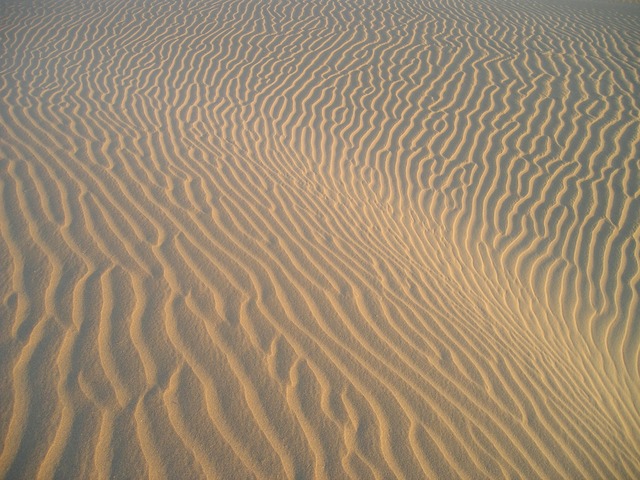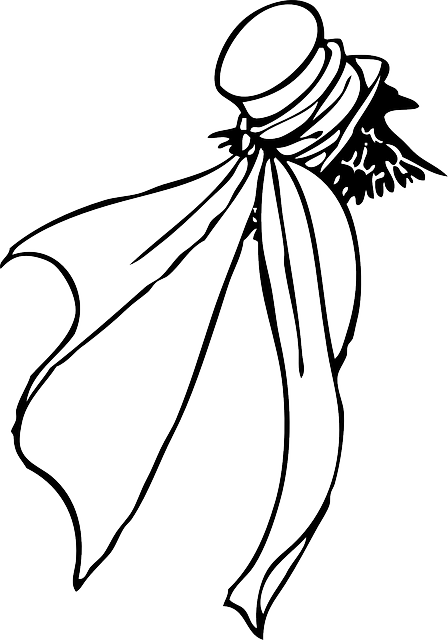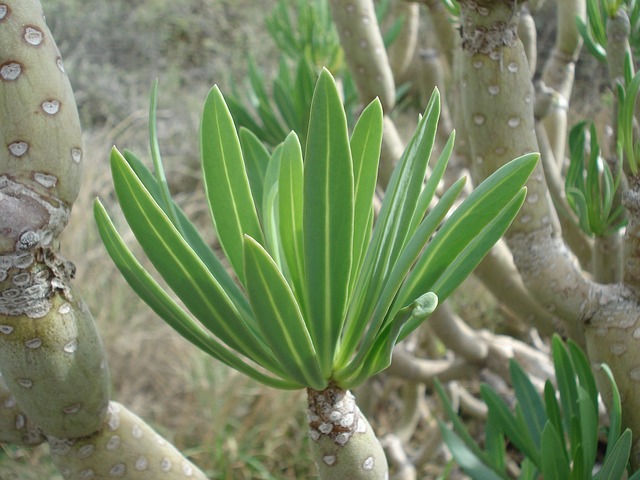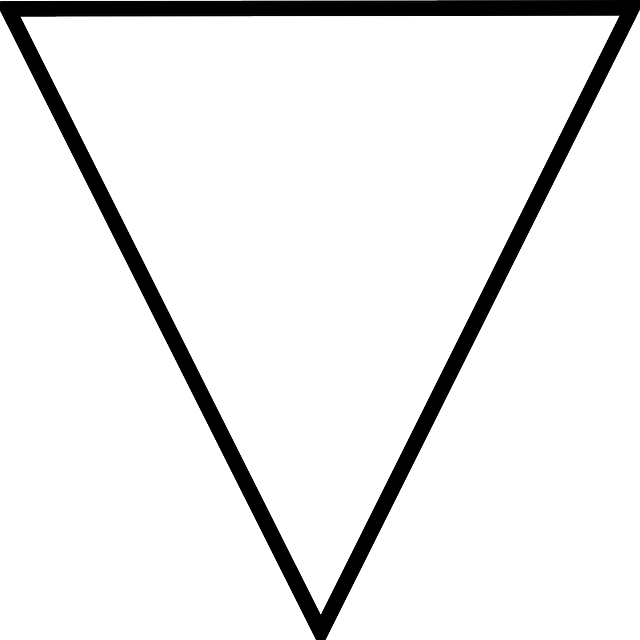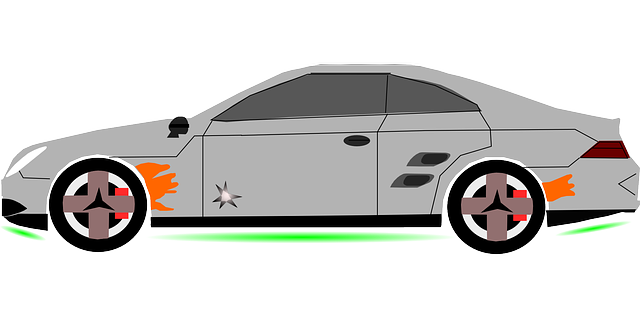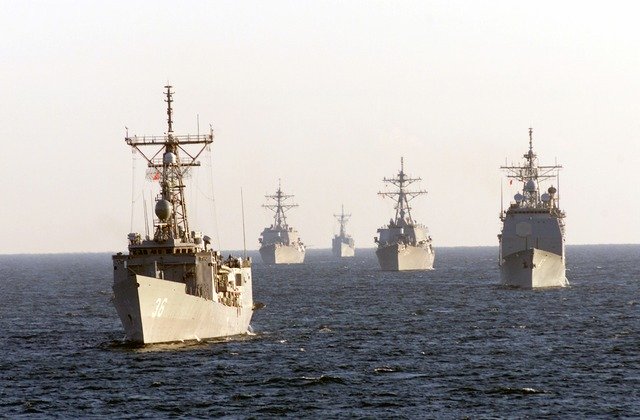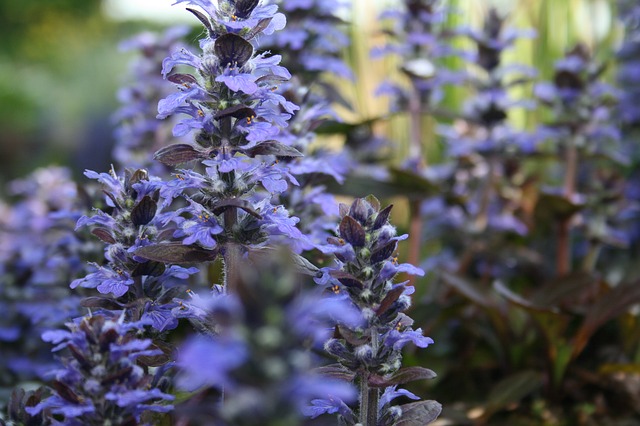معركة رفح
| معركة رفح Battle of Rafa | |||||||
|---|---|---|---|---|---|---|---|
| جزء من مسرح عمليات الشرق الأوسط في الحرب العالمية الأولى | |||||||
|
جزء من خط اطلاق النار في رفح | |||||||
| |||||||
| الخصوم | |||||||
|
الامبراطورية البريطانية |
الدولة العثمانية | ||||||
| القادة والزعماء | |||||||
|
فيليپ چتوود هنري جورج تشوڤل |
علي فؤاد بك كريس فون كرسنشتاين |
||||||
| القوات | |||||||
|
قول الصحراء
دورية العربات الخفيفة رقم 7 |
الحامية العثمانية وعديدها 2,000 جندي | ||||||
| الخسائر | |||||||
|
71 قتيل، 415 جريح |
200 قتيل، 168 جريح، 1,434 أسير |
||||||
معركة رفـح، وتُعهد أيضاً بإسم فِعلة رفح Action of Rafah، نشبت فيتسعة يناير 1917، كانت ثالث وآخر معركة لإتمام استعادة القوات البريطانية لكامل شبه جزيرة سيناء أثناء حملة سيناء وفلسطين في الحرب العالمية الأولى. في هذه المعركة، هاجم قول الصحراء من قوة التجريدة المصرية حامية الجيش العثماني المتخندقة في المقرونتين، جنوب رفح، بالقرب من حدود سلطنة مصر مع الدولة العثمانية، إلى الشمال والشرق من من الشيخ زويد. شكـّل الهجوم بداية القتال داخل الأراضي العثمانية في فلسطين.
بعد فوزات الامبراطورية البريطانية في معركة رمانة في أغسطس 1916 ومعركة مغضبة في ديسمبر، أُجبر الجيش العثماني على التقهقر إلى الحد الجنوبي لفلسطين أمام توغل قوة التجريدة المصرية شرقاً مدعومة من خطوط اتصال ممددة. اعتمد هذا التقدم على إنشاء سكة حديدية وخط أنابيب مياه. وبوصول السكة الحديدية العريش في أربعة يناير 1917، أصبح ممكناً شن هجوم على رفح بقول الصحراء المشكـّل حديثاً. وأثناء الهجوم الذي استغرق طوال النهار، دافعت الحامية العثمانية في المقرونتين عن سلسلة من الاستحكامات والخنادق الاستراتيجية المحصنة على أرض مرتفعة تحيط بها أراضي عشبية منبسطة. إلا أنهم سرعان ما التف حولهم الخيالة الأستراليون، والرماة الراكبون النيوزيلنديون، جنود البحرية الراكبون والهجانة والعربات المدرعة. وفي عصر ذلك اليوم، استولى لواء الرماة الراكبين النيوزيلندي على الاستحكام الأوسط، ثم ما لبثت حتى تساقطت باقي الدفاعات العثمانية تباعاً.
خلفية
إثر فوزها في معركة رمانة في أربعة أغسطس 1916، واصلت فرقة الأنزاك الراكبة مع اللواء الخامس الراكب الملحق بها ومدعومة من المشاة، الهجوم. اعتمد تقدمهم على إنشاء خط السكة الحديدية وخط أنابيب مياه. وما حتى وصل رأس السكة الحديدية إلى مسافة 40 كم، في 23 ديسمبر 1916، حتى احتلت فرقة أنزاك الراكبة، ما عدا اللواء الثاني خيالة وملحقاً بالفرقة لواء الهجانة الامبراطوري، العريش في قتال دام نهاراً في معركة مغضبة. وفي تلك الأثناء، تقدمت الفرقة 52 (للأراضي المنخفضة) من رمانة وتمركزت كحامية للعريش وبدأـ في تحصين البلدة المطلة على البحر المتوسط، والواقعة على بعد 48 كم من رأس السكة الحديدية.
كانت العريش على بعد 140 كم على الطريق من أقرب قاعدة بريطانية في القنطرة شرق على قناة السويس، ولكن طوال الأسبوعين التاليين، منذ وصول البحرية الملكية في 22 ديسمبر، وأعقبها بسرعة أول مستونادىت في 24 ديسمبر، فقد نمت تلك القاعدة المتقدمة الهامة لقوة التجريدة المصرية بسرعة بوصول 1,500 طن من العتاد بالسفن. الإمدادات من جميع الأنواع أنزلها سلاح العمال المصريين ووزعها سلاح الهجانة المصري. أنشطة الإمداد بالغة الحيوية والأهمية تلك في العريش كانت تحميها حامية المشاة والمدفعية البرية، بدعم من البحرية. وفي أربعة يناير 1917 وصل أول قطارات الإنشاءات إلى العريش، إلا حتى وقتاً مر قبل حتى يتم أعطى خط السكة الحديدية وما جلبه من قدرة هائلة على الإمداد لتطوير البنية التحتية وعلى إمداد الحاميات الكبيرة.
كان الجنرال أرشيبالد مري، قائد قوة التجريدة المصرية، متحمساً لإتمام التقدم عبر شمال سيناء، ليضغط على الجيش العثماني الجنوبي. إذ كان يعتقد حتى هجوماً بريطانياً يفترض أن يجبر القوات العثمانية على التخلي عن قواعدها الصحراوية وثغورها في شبه جزيرة سيناء المصرية، فأمر بالتقدم من العريش إلى رفح، وهي مسافة 43 كم، ليبدأ بأقصى سرعة ممكنة.
التمهيد
في 28 ديسمبر، أمر ميجور جنرال هاري چوڤل، قائد فرقة أنزاك الراكبة، اللواء الأول خيالة حتى يستطلع بير البرج 19 كم على طول الطريق من العريش باتجاه رفح. وقد وجدوا حتى الطريق مناسب للعربات والمدفعية، وأفادت استطلاع اضافي من نفس اللواء بعد يومين إلى الشيخ زويد 32 كم من العريش بوجود سهوباً من المراعي والمحاصيل والخشخاش. تحركت حامية متقدمة صغيرة لمسافة 16 كم للأمام، حتى أصبحت على مرمى البصر من الدفاعات الرئيسية لرفح في المقرونتين، وأفادت "نشاطاً بالغاً."
The weather cleared onخمسة January, allowing a patrol from No. 1 Squadron, Australian Flying Corps (AFC), to observe 2,000 or 3,000 Ottoman soldiers digging defences south of Rafa in the area of El Magruntein. British air patrols, two days later, found Ottoman garrisons in strength at El Kossaima and عوجة الحفير in the central, northern Sinai, which could threaten the right flank of the advancing EEF or reinforce Rafa. While the British air patrols were away onسبعة January, German airmen took advantage of the growing EEF concentration of formations and supply dumps to bomb El Arish during the morning and evening. The next day the Australian No. 1 Squadron's patrols were in the air all day covering preparations for the attack on Rafa.
غادر ليوتنانت جنرال فيليپ چتوود، العريش على رأس قول الصحراء، في الساعة 16:00 فيثمانية يناير باتجاه رفح حيث كانت تتمركز حامية عثمانية قوامها 2,000 جندي. Chetwode's mounted force was the same as Chauvel commanded أثناء معركة مغضبة في ديسمبر،، with the addition of the 5th Mounted Brigade (which had been garrisoning العريش) and No.سبعة Light Car Patrol consisting of four gun cars and three stores cars. Risking an aerial attack during daylight hours, بدأت القوة رحلة 48 كم قبل الغروب لتضمن حتى هناك وقت كاف للقوة لتصل المقرونتين. For the first few miles they trekked over heavy sand dunes, which were difficult to negotiate for the doubled teams of horses pulling the guns and ammunition wagons. Once the great shallow trough, worn down by traffic since ancient times, along the Old Road or Pilgrims' Way appeared, the guns and ammunition wagons travelled on the firm middle way while the mounted units rode on either side. The vanguard of the column reached الشيخ زويد at about 22:00; the Desert Column bivouacked near the crossroads to the west of the village. Here the first grass the horses had seen since leaving Australia was found on the edge of the fertile maritime plain, 26 كم شمال العريش.
The plan for the attack at Rafa the next morning,تسعة January, was a repetition of Chauvel's successful encirclement attack في مغضبة. The regiments and motor cars would surround the Ottoman garrison position, gallop up under fire, then dismount to attack the defenders, in their treble system of trenches and field-works around the earthwork redoubts on the knoll.
قوة الهجوم
الوحدات الراكبة من قول الصحراء، التي نفرت إلى الهجوم بقيادة چتوود كانت:
- فرقة أنزاك الراكبة، بقيادة تشوڤل، composed of the 1st و3rd Light Horse Brigades, the New Zealand Mounted Rifles Brigade وبطاريات مدفعية الخيالة الملكية من إنڤرنس، لستر، وسمرست؛
- 1st, 2nd and 3rd Battalions Imperial Camel Corps Brigade with the Hong Kong and Singapore Mountain Battery;
- 5th Mounted Brigade with a battery of the Honourable Artillery Company (18–pounders);
- دورية رقمسبعة للعربات الخفيفة، مكونة من ست عربات فورد مدرعة خفيفة مزودة بمدافع رشاشة.
السرب رقم 1 من الفيلق الأسترالي الطائر، الذي كان متمركزاً في "مُستبـِق" أثناء عمليات العريش ومغضبة، تحرك للأمام إلى مسافةثمانية كم غرب العريش لدعم الهجوم.
المدافعون العثمانيون
رفح كانت يدافع عنها الفوج 31 مشاة العثماني (الفرقة الثالثة) مدعومة من بطارية مدفعية جبلية واحدة. It had been reported by British aerial reconnaissance that this force was between 2,000 and 3,000 strong. They were strongly entrenched in four main positions on the high ground about Hill 255, وتُعهد بإسم المقرونتين. The central redoubt, which rose about 200 قدم (61 م) above to dominate the surrounding grassland, was supported by three systems of redoubts identified as A, B and C systems. These redoubts were linked and supported by trenches on the slopes spreading out towards the south-east, south and south-west. The strong, well prepared and well sited redoubts and trench systems provided all-round defence with a clear view of a battlefield devoid of cover for some 2,000 ياردs (1,800 م). The only slight weakness was to the rear of the position in the north-east.
المعركة
The Desert Column began the final approach to attack Rafa onتسعة January 1916 without any reserve ammunition for the artillery, rifles and machine guns. The Column's commander, Chetwode, had ordered all wheeled vehicles, excepting the guns, to remain at Sheikh Zowaiid. His brigadiers complied with the order, but only under protest by all. It had been the intention of Desert Column Headquarters that the reserve ammunition would be sent onward after daylight. For some reason, this did not occur, resulting in a critical failure of the ammunition supply during the battle. In many cases, supplies rushed forward, but failed to reach the units requiring them on the firing line.
At 01:00 the 1st Light Horse and the New Zealand Mounted Rifles Brigades led Desert Column. Half a mile (0.80 km) من الشيخ زويد، they encountered a hostile Bedouin camel patrol which was captured. At 06:15 the Auckland Mounted Rifle Regiment (New Zealand Mounted Rifles Brigade) was first to reach the boundary pillars on the Egyptian and Ottoman frontier, moving from the African continent onto Asia. These two brigades rode to a position from which to attack the Rafa defences, from the south, east and north. They were followed at 02:30 by the remainder of the Anzac Mounted Division, part of the 5th Mounted Brigade, the Imperial Camel Brigade, and six Ford motor cars of the 7th Light Car Patrol. Two troops of the Worcester Yeomanry, (5th Mounted Brigade) remained at Sheikh Zowaiid to protect the ammunition column, while a squadron followed the caravan road towards Rafa.
By 06:45 the Anzac Mounted Division headquarters was established 4.5 ميلs (7.2 kم) west of Karm Ibn Musleh on the frontier to the south of Rafa and El Magruntein. The 1st and 3rd Light Horse Brigades and the artillery, took positions to the south to guard against the Ottoman garrison retreating to the south-east, with the Imperial Camel Corps Brigade located three quarters of a mile (1.21 km) to the west. The New Zealand Mounted Rifles Brigade was about واحد ميل (1.6 kم) to the north with the 5th Mounted Brigade forming Desert Column's reserve. By 07:00 a patrol of the Wellington Mounted Rifles had cut the telegraph line running east from Rafa towards Shellal and Gaza, isolating the Rafa garrison. Chauvel had reconnoitred the El Magruntein defences and the British Empire horse artillery batteries had begun firing on the redoubts at El Magruntein.
Just after 08:00 the New Zealand Mounted Rifles Brigade circled northwards, moving into position for their attacks on the C4 and C5 groups of redoubts and trenches, while the 1st Light Horse Brigade moved into position to attack the C3, C2 and C1 groups. After these objectives were captured, the two brigades were to attack the central redoubt. Meanwhile, three battalions of the Imperial Camel Brigade were ordered to attack the D group of fortifications. The 3rd Light Horse Brigade formed the Anzac Mounted Division's reserve.
The divisional artillery had selected their targets. The Leicester, Inverness and Somerset Batteries Royal Horse Artillery were to cross fire with B Battery, Honourable Artillery Company to produce a concentrated artillery attack for half an hour from 09:30 to 10:00. Under cover of this barrage, by 09:45 the attacking troops had approached to within 2,000 ياردs (1,800 م) of the Ottoman entrenchments.
بدء الهجوم
As the 1st Light Horse Brigade advanced from the direction of El Gubba, westward towards El Magruntein and the "C" group of redoubts, they encountered heavy machine-gun and shrapnel fire from German and Ottoman guns. To the south, the Imperial Camel Brigade advanced towards the B4 redoubt, and at 10:30 the 5th Mounted Brigade was ordered "to demonstrate against the works further west." When they arrived at a plateau 2,500 ياردs (2,300 م) from El Magruntein, the Warwickshire Yeomanry regiment on the right was ordered to attack the B1 and B2 redoubts, while the Gloucestershire Yeomanry were "sent to the left along the edge of the sand-dunes" to attack the right of the A1 redoubt, the most westerly of the defences. The troops dismounted to begin their attack 2,000 ياردs (1,800 م) from their objectives, but were targeted "at once" by heavy machine-gun fire and shrapnel from two guns.
By 10:00 the attack from the north, led by the Auckland Mounted Rifles and supported by two machine-guns, with the Canterbury Mounted Rifles Regiment on their right, had ridden into Rafa as they circled around El Magruntein. Here, they quickly captured the village along with six German and two Ottoman officers, 16 other ranks and 21 Bedouins. Two troops were sent to watch for the approach of Ottoman reinforcements; one troop to the north towards Khan Yunis and one to the east towards Shellal.
With the Ottoman garrison defending El Magruntein cut off from the north and east by the New Zealand Mounted Rifles Brigade, orders were issued for all Desert Column reserves to be committed and the attack "pressed home." By 11:00 the attacking force was deployed from right to left: the Canterbury and Auckland Mounted Rifles Regiments, two squadrons of the 1st Light Horse Regiment, one squadron of the 2nd Light Horse Regiment, the 3rd Light Horse Regiment (1st Light Horse Brigade), the 10th Light Horse Regiment (3rd Light Horse Brigade), the 1st Battalion Imperial Camel Corps Brigade and the "Warwick and Gloucester Yeomanry." They were supported by the Inverness Battery covering the New Zealanders, the Leicester and Somerset Batteries covering the Australians and the Hong Kong Battery covering the Camel Corps battalion, while the HAC battery shelled the "C" group of redoubts from a distance of three quarters of a mile (1.21 km).
Chaytor, commanding the New Zealand Mounted Rifles Brigade, moved his headquarters up to the boundary post واحد ميل (1.6 kم) south-east of Rafa, immediately behind the Auckland Mounted Rifles. Half an hour later, the attack was seen to be steadily progressing all along the line. By 12:15 the Wellington Mounted Rifles Regiment had come up to the front line, between the Canterburys on the right, and the Aucklanders on the left, within 600 ياردs (550 م) of El Magruntein, while the 2nd Battalion of the Camel Brigade advanced to extend the line held by their 1st Battalion. Shortly afterwards, the Canterbury Mounted Rifles Regiment found touch with the left of the 5th Mounted Brigade, completing the cordon around the Ottoman Army entrenchments. To the left of the 5th Mounted Brigade, the 7th Light Car Patrol reached the Rafa road, where they found cover from which to direct fire on the A1 and A2 redoubts 1,600 ياردs (1,500 م) away. Meanwhile, the batteries had pushed forward about 1,500 ياردs (1,400 م) from their previous positions. "B" Battery HAC stopped firing on the "C" group of redoubts, to commence firing at a range of 1,600 ياردs (1,500 م) on the A1 and A2 redoubts, in support of the 5th Mounted Brigade.
نقص الذخيرة
The Ottoman defenders continued to hold very strong defensive positions, with each redoubt ideally placed to provide supporting fire for other redoubts. In most places the dismounted attackers were utterly exposed to this fire. A constant stream of fire was maintained on the Ottoman parapets to keep the defenders suppressed and unable to take aim while the attack continued. Little by little the cordon slowly drew tighter under intense fire over the bare, gently-sloping grasslands. However, between about 12:15 and 14:15 progress slowed.
By early to mid-afternoon supplies of ammunition had begun to run low. Although Chauvel called for further effort, the mistake of leaving the ammunition vehicles behind was paid, as the attack wavered. The New Zealand Mounted Rifles Brigade ran out of ammunition for four of its machine-guns and the Inverness Battery ran out of shells and had to withdraw.
At 14:30 Chauvel ordered a fresh effort against the C group of redoubts, to begin at 15:30, while a sustained artillery barrage was to continue on these redoubts until then. However, 15 minutes later, an Ottoman machine-gun officer and three German soldiers, captured by the troop of the Wellington Mounted Rifles Regiment keeping watch towards Shellal, stated that their 160th Regiment had left Shellal on the Wadi Ghuzzeh when the attack began, to reinforce the Rafa garrison. Shellal was between عشرة and ثلاثة عشر ميلs (16 and 21 kم) or about three and a half hours away. This was confirmed when two battalions were seen advancing in artillery formation, over the ridges west of Shellal towards Rafa. An additional 500 soldiers were seen approaching Rafa from the direction of Khan Yunus by the same mounted rifle regiment's northern guard.
We were quite stuck up in the open, about 400 ياردs (370 م) from the trenches, about 15:00, and I ordered the New Zealanders to work round the rear and assault the principal work.
—Chetwode, commanding Desert Column
الهجمات النهائية
The general assault, launched at 15:30, was supported by all available guns. It made slow progress against the stubborn Ottoman defenders, who were supported by bombing from German planes, while the advanced guard of Ottoman reinforcements, from Khan Yunus in the north and Shellal in the east, were attacking the two troops of the Wellington Mounted Rifles Regiment. Four guns of the Canterbury Mounted Rifles Regiment, on the right flank, were moved to a trench before being moved forward to the sunken road. From there they maintained effective overhead covering fire, until the assaulting troops were within a few yards of the trenches. These guns were also well positioned to provide cover if pressure by the Ottoman reinforcements from Khan Yunus and Shellal proved too strong for the two troops of Wellingtons, or if the New Zealand Mounted Rifles Brigade was forced to retire to the coast.
After steady, methodical and persistent work, by 16:00 a cloud of smoke hung over the central redoubt from rifle and machine gun fire. The covering fire was so effective that the Ottoman defenders had extreme difficulty aiming and firing their rifles and machine-guns. It then became possible for the attacking forces to cover the last 600–800 ياردs (550–730 م) of smooth grassy slope in two rushes.
At about 16:30 the New Zealand Mounted Rifles Brigade launched its final assault on the central redoubt from the north-west, the north and the north-east, without artillery support. Instead, they made determined use of machine guns on the firing line, crossing fire to get better targets, and cooperating with the machine-guns of the 1st Light Horse Brigade to cover the advance to within 400 ياردs (370 م) of the main Ottoman position. They captured the central redoubt in a final bayonet charge, at the run, many of them firing as they ran. From their captured position in the dominating central redoubt, they were able to enfilade other redoubts still held by Ottoman defenders.
With the New Zealanders holding the dominant redoubt, the 1st and the 3rd Light Horse Brigades were able to advance and capture the remaining redoubts on their fronts. As the 3rd Battalion of the Imperial Camel Brigade approached the B group of trenches, a white flag appeared, and the B2 and the central work of B group were occupied by 16:50. They captured five officers and 214 other ranks while the Warwickshire Yeomanry captured the B1 redoubt and another 101 prisoners. These successful attacks were supported by aircraft, which bombed the redoubts and trenches. The aircraft had recently been fitted with wireless (they had to drop messages during the Magdhaba attack in December), and during the afternoon reported progress to Desert Column headquarters. The New Zealanders remained close to the main redoubt system while prisoners were collected and sent to Sheikh Zowaiid and the four captured guns were taken away. Chetwode reported to the commander of Eastern Force Lieutenant General Charles Macpherson Dobell that the work of all troops engaged had been excellent, and the part played by the New Zealand Mounted Rifles Brigade had been outstanding.
الخسائر
Desert Column suffered three times the losses previously endured at Magdhaba. The 487 casualties included 124 New Zealanders: 71 killed, 415 wounded and one missing.
The mainly Ottoman prisoners, which included some German machine-gunners, totalled between 1,472 and 1,635, with 162 of them wounded. About 200 Ottoman soldiers were killed on the battlefield.
الأعقاب
After establishing a strong rearguard position manned by two light horse regiments, commanded by Lieutenant Colonel Leslie Cecil Maygar, it was necessary for the bulk of Desert Column to return to Sheikh Zowaiid for water and rations, arriving about midnight. Two light horse regiments remained to stand guard, while the battlefield was cleared by the light horse field ambulances, their stretcher bearers working into the night. The 3rd Light Horse Field Ambulance, covered by the 8th Light Horse Regiment (3rd Light Horse Brigade), remained on the battlefield, as all available ambulance carts and empty wagons were sent up from Sheikh Zowaiid to help transport the wounded to hospital.
نحو100 أوأكثر قد جـُرحوا، British and Turk, lay in the 3rd Light Horse Field Ambulance advanced dressing-station, with few blankets, no food, and no lights, all these conveniences having, in the confusion, gone back to Sheikh Zowaiid on the equipment camels. The 5th Mounted Field Ambulance, with a large number of wounded, was in a similar plight. No. 1 Welsh Ambulance Convoy, long overdue, had not arrived – the convoy had indeed received such alarming reports from retiring parties, that it had returned to Sheikh Zowaiid. All telephonic communication had accidentally been cut off, the Turks were close at hand, the night was a bitter one. Cold, hungry, and hourly expecting capture, the wounded suffered severely.
—R. M. Downes, Australian Army Medical Services, 1914–18
The Anzac Mounted Division Field Ambulance had been reorganised before the battle, and theعشرة pairs of litters, 15 pairs of cacolets, 12 sand-carts, 12 cycle stretchers and six sledges, capable of carrying 92 patients at a time, worked to transport the wounded. While, in the morning, the 8th Light Horse Regiment was attacked by Ottoman cavalry and camel units which the light horsemen forced to withdraw leaving 14 prisoners. The whole of the 3rd Light Horse Brigade returned to the battlefield onعشرة January with the 7th Light Car Patrol and wagons to collect captured material.
The Turkish held off, but it was not until early next morning that, on the arrival of the 3rd Light Horse Brigade at Sheikh Zowaiid, the Welsh ambulance convoy received orders to return to Magruntein. At 8 a.m. the wounded were sent to Sheikh Zowaiid, and early the same afternoon all the sandcarts of the 52nd Division arrived from El Arish and evacuated them to the receiving station there. Some of these sandcarts went out close to Rafa to bring in a number of wounded Turks who had been missed, and arrived back at Sheikh Zowaiid at 5.30 a.m. on January 11 without molestation, although the rearguard had come in. After treatment and a night’s rest at Sheikh Zowaiid the remainder of the wounded were evacuated in the 1st Light Horse Field Ambulance transport and two Welsh ambulance convoys to El Arish, where they arrived at 6 p.m. Thence they were taken away to Kantara on January 12 by ambulance train, which now came within three miles of El Arish.
—R. M. Downes, Australian Army Medical Services, 1914–18
قصف العريش
During the night of 19 January, with the benefit of a full moon, German and Ottoman aircraft carried out the biggest aerial bombing raid yet, inflicted on the EEF's fast growing, important forward base of El Arish. As well as dropping bombs, these aircraft, probably the powerful new Taube Albatros D.III, swooped down firing machine gun bullets into the camp. Casualties, particularly in the horse lines, which were an obvious target from the air, were considerable.
خطط مري
The campaign across the Sinai desert, which had begun in August, ended with the expulsion of the Ottoman Empire from Egyptian territory. With the victory at Rafa, the steady progress of the railway and pipeline, and the build up of supplies at El Arish, the EEF was able to build a firm base from which to advance into Ottoman territory. But to do so would require the capture of Gaza; the First Battle of Gaza was fought in March 1917.
On 19 January aerial reconnaissance found the Ottoman Army had evacuated القسيمة and the strength of the main desert base at عوجة الحفير had decreased. However, it was thought that Ottoman garrisons would continue to hold onto the Nekhl area in the center of the Sinai Peninsula, including the villages of Bir el Hassana, Gebel Helal, Gebel Yelleg and Gebel el Heitan. To address the problem of Ottoman Army units in the rear of the advancing EEF, a Raid on Nekhl was carried out by two columns of light horse and yeomanry. The two columns moved out from Serapeum, near Ismailia on the Suez Canal, with three aircraft in support to attack Nekhl 60 ميلs (97 kم) to the east. However, on 17 February when the columns were approaching the area, reconnaissance aircraft found the Ottoman garrisons had retired.
انظر أيضاً
- كتاب الحملة المصرية، في مخطوطات الفهم، لفهم وجهة النظر العثمانية في الحملة.
ملاحظات
- ^ While fighting on foot, one quarter of the light horsemen, riflemen and yeomanry were holding the horses; a brigade then became equivalent in rifle strength to an infantry battalion. [Preston 1921 p.168]
- ^ Major Wilkie, Quartermaster of the Wellington Mounted Rifles Regiment, remained at Sheikh Zowaiid with the supply convoys. But during the early hours of the battle, he was so concerned by the small amounts of .303 small arms ammunition (SAA), (used by both rifles and machine guns) his regiment had gone into battle with, that he went forward to Rafa. There he heard that his regiment was calling for ammunition. He seized a cable wagon, emptied out the signalling gear and wire, filled it with boxes of SAA and galloped across to the New Zealand Mounted Rifles Brigade in time for the general assault on the redoubt, materially assisting in the final success.[Powles 1922, pp. 77–8]
الهامش
- ^ Downes 1938, p. 593
- ^ Carver 2003, p. 194
- ^ Bruce 2002 p. 84
- ^ Gullett 1941, p. 229
- ^ Falls 1930 Vol. 1 pp. 263, 271
- ^ Cutlack 1941, pp. 49–51
- ^ Falls 1930 Vol. 1 p. 271
- ^ Falls 1930 Vol. 1 pp. 262–3
- ^ Gullett 1941, p. 230
- ^ Powles 1922, p. 68
- ^ Gullett 1941, pp. 230–2
- ^ Powles 1922, p. 65
- ^ Coulthard-Clark 1998, p. 123
- ^ Cutlack 1941 p. 50
- ^ Falls 1930 Vol. 1 p. 377
- ^ Bruce 2002, pp. 85 & 86
- ^ Gullett 1941, pp. 230, 234
- ^ Powles 1922, pp. 64–5
- ^ Powles 1922, pp. 66–9
- ^ Powles 1922, pp. 77–8
- ^ Gullett 1941, pp. 231–232
- ^ Falls 1930 Vol. 1 pp. 263–4
- ^ Falls 1930 Vol. 1 p. 264
- ^ Falls 1930 Vol. 1 p. 265
- ^ Gullett 1941, p. 233-234
- ^ Powles 1922, p. 71 and map pp. 80–1
- ^ Falls 1930 Vol. 1 p. 266
- ^ Powles 1922 map pp. 80–1
- ^ Gullett 1941, p. 234
- ^ Falls 1930 Vol. 1 p. 267
- ^ Powles 1922, pp. 71–2
- ^ Bruce 2002, pp. 86–7
- ^ Hill 1978, p. 93
- ^ Gullett 1941, pp. 235, 237–238
- ^ Powles 1922, pp. 74–5
- ^ Falls 1930 Vol. 1 p. 268
- ^ Chetwode quoted in Pugsley 2004, p. 136
- ^ Powles 1922, pp. 75–6
- ^ Falls 1930 Vol. 1 pp. 268–9
- ^ Cutlack 1941 pp. 49–51
- ^ Falls 1930 Vol. p. 254
- ^ Anzac Mounted Division War Diary Appendix 24, pp. 3–8 AWM4-1-60-10
- ^ Hill 1978 pp. 93–4
- ^ Powles 1922, pp. 76–7
- ^ Falls 1930 Vol. 1 p. 270
- ^ Bruce, 2002, p. 87
- ^ Downes 1938, pp. 596–7
- ^ Pugsley 2004, pp. 135–6
- ^ Carver 2003, p.195
- ^ Powles 1922, pp. 76–7, 79
- ^ Bruce 2002 p.87
- ^ Dennis et al. 2008, p. 405
- ^ Powles 1922, p. 76
- ^ Gullett 1941, p. 242
- ^ Falls 1930 Vol. 1 p. 269
- ^ Falls 1930 Vol. 1 p. 274
- ^ Falls 1930 Vol. 1 pp. 269–70
- ^ Cutlack 1941, p. 52
- ^ McPherson 1983, pp. 184–6
- ^ Wavell 1968, p. 70
- ^ Bruce 2002, p. 87
- ^ Cutlack, 1941, p. 51
- ^ Cutlack 1941, pp. 53–55
المراجع
- The Official Names of the Battles and Other Engagements Fought by the Military Forces of the British Empire during the Great War, 1914–1919, and the Third Afghan War, 1919: Report of the Battles Nomenclature Committee as Approved by The Army Council Presented to Parliament by Command of His Majesty. London: Government Printer. 1922. OCLC 29078007.
- Bruce, Anthony (2002). The Last Crusade: The Palestine Campaign in the First World War. London: John Murray. ISBN .
- Carver, Michael, Field Marshal Lord (2003). The National Army Museum Book of The Turkish Front 1914–1918 The Campaigns at Gallipoli, in Mesopotamia and in Palestine. London: Pan Macmillan. ISBN .
- Coulthard-Clark, Chris (1998). Where Australians Fought: The Encyclopaedia of Australia's Battles. St Leonards, Sydney: Allen and Unwin. ISBN .
- Cutlack, Frederic Morley (1941). . Official History of Australia in the War of 1914–1918. Volume VIII (11th ed.). Canberra: Australian War Memorial. OCLC 220900299.
-
Dennis, Peter (2008). The Oxford Companion to Australian Military History (2nd ed.). Melbourne: Oxford University Press, Australia & New Zealand. OCLC 489040963. Unknown parameter
|coauthors=ignored (|author=suggested) (help) - Downes, Rupert M. (1938). "The Campaign in Sinai and Palestine". In Butler, Arthur Graham (ed.). . Official History of the Australian Army Medical Services, 1914–1918. Volume 1 Part II (2nd ed.). Canberra: Australian War Memorial. pp. 547–780. OCLC 220879097.
-
Falls, Cyril (1930). Military Operations Egypt & Palestine from the Outbreak of War with Germany to June 1917. Official History of the Great War Based on Official Documents by Direction of the Historical Section of the Committee of Imperial Defence. Volume 1. London: HM Stationery Office. OCLC 610273484. Unknown parameter
|coauthors=ignored (|author=suggested) (help) - Grainger, John D. (2006). The Battle for Palestine, 1917. Woodbridge: Boydell Press. ISBN .
- Gullett, Henry S. (1941). . Official History of Australian in the War of 1914–1918. Volume VII (11th ed.). Canberra: Australian War Memorial. OCLC 220900153.
- Hill, A. J. (1978). Chauvel of the Light Horse: A Biography of General Sir Harry Chauvel, GCMG, KCB. Melbourne: Melbourne University Press. OCLC 5003626.
-
Keogh, E. G. (1955). Suez to Aleppo. Melbourne: Directorate of Military Training by Wilkie & Co. OCLC 220029983. Unknown parameter
|coauthor=ignored (|author=suggested) (help) -
Powles, Charles Guy (1922). . Official History New Zealand's Effort in the Great War. Volume III. Auckland: Whitcombe & Tombs. OCLC 2959465. Unknown parameter
|coauthor=ignored (|author=suggested) (help) - Powles, Charles Guy (1928). . The History of the Canterbury Mounted Rifles 1914–1919. Whitcombe and Tombs. OCLC 21614924.
- Preston, R. M. P. (1921). The Desert Mounted Corps: An Account of the Cavalry Operations in Palestine and Syria 1917–1918. London: Constable & Co. OCLC 3900439.
- Pugsley, Christoper (2004). The Anzac Experience: New Zealand, Australia and Empire in the First World War. Auckland: Reed Books. ISBN .




